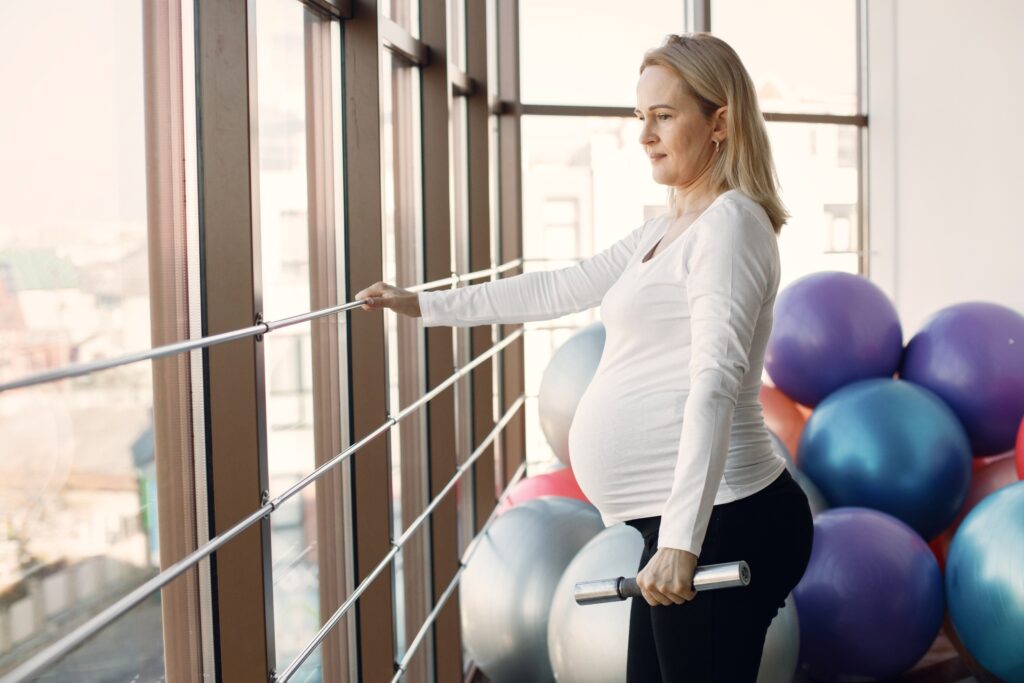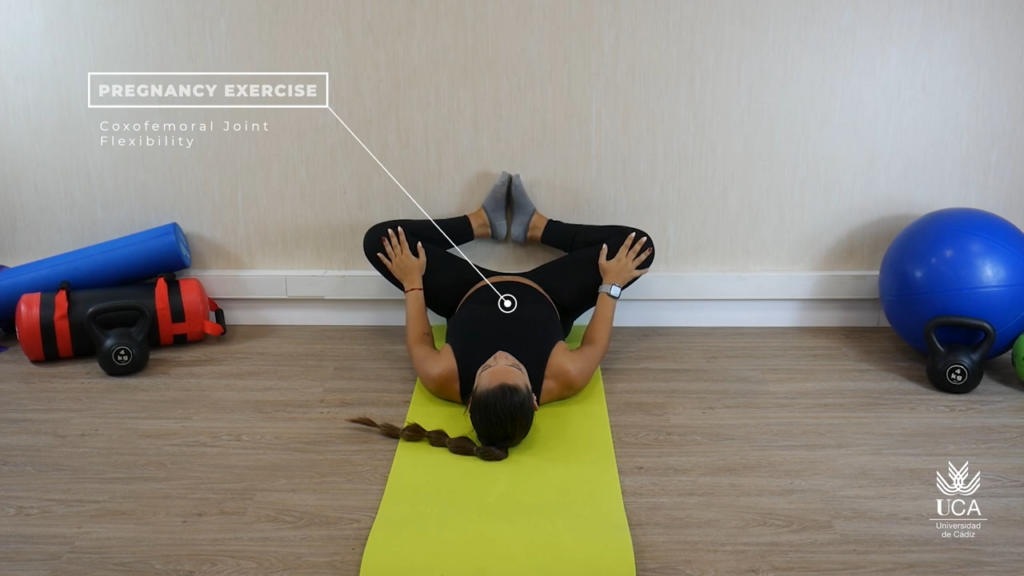Physical activity and exercise – differences
PHYSICAL ACTIVITY
defined as any bodily movement produced by the contraction of skeletal muscles in all stages of life, maintains and improves cardiorespiratory fitness, reduces the risk of obesity and associated comorbidities, and results in greater longevity [1].
EXERCISE
defined as physical activity consisting of planned, structured, and repetitive bodily movements done to improve one or more components of physical fitness, is an essential element of a healthy lifestyle [1].
Benefits of physical activity and exercise during pregnancy
Exercise can help preventing relevant pregnancy related disorders, such as:
- gestational diabetes,
- excessive gestational weight gain,
- hypertensive disorders,
- urinary incontinence,
- fetal macrosomia,
- lumbopelvic pain,
- anxiety and prenatal depression [2].
Anatomic and Physiologic Changes with exercise during Pregnancy
- Increased fluid retention: predispose nerve entrapment (carpel tunnel)
- Ligamentous Laxity
- Symphysis pubis widening begins in 10th and 12th week of pregnancy under the influence of the hormone relaxin
- 20% increase in weight during pregnancy may increase force on a joints by as much as 100%
- Hyperlordosis accentuates anterior pelvic tilt
- About 60% of pregnant women experience LBP
- Cardiovascular Changes (blood volume, heart rate, stroke volume, and cardiac output normally increase during pregnancy, and systemic vascular resistancedecreases)
- Respiratory Changes (Decrease in pulmonary reserve: ability to exercise anaerobically is impaired, oxygen availability for strenuous exercise decreases. Aerobic training increases aerobic capacity in normal weight and overweight women)
- Temperature regulation (Stay well-hydrated, wear loose fitted clothing, avoid exercising in high heat and humidity to avoid heat stress) [3].
The World Health Organization recommendation – All pregnant women without contraindication should:
- do at least 150 minutes of moderate-intensity aerobic physical activity throughout the week,
- incorporate a variety of aerobic and muscle-strengthening activities,
- limit the amount of time spent being sedentary. Replacing sedentary time with physical activity of any intensity provides health benefits [4].
TREATMENT, FREQUENCY AND LENGTH OF SESSION [5]:
Previously sedentary women:
Aerobic exercise:
- from 15 minutes, 3 x/ week,
- to 30 minutes, 4 x/ week
Women with uncomplicated pregnancies:
- Moderate intensity (12-14 in Borg scale)
- Resistance/flexibility training and aerobic
- Exercise, individually or in combination
30 min/day, 4 or 5 days/week
Examples of Exercises That Have Been Extensively Studied in Pregnancy and Found to Be Safe and Beneficial:
- Walking
- Stationary cycling
- Hydrotherapy, water
- Aerobics
- Low-impact aerobic exercises
- Resistance exercise (eg. using weights, elastic bands)
- Stretching exercise
- Modified Pilates and Yoga [6].
Potentially harmful, unsafe Physical Activities
- Contact sports (i.e., soccer, basketball)
- Activities with high risk of falling (i.e., off road cycling)
- Lying flat on back (after the first trimester)
- Hot Yoga, Hot Pilates (avoiding positions that result in decreased venous return and hypotension) [7].
Routine exercise should be recommended to healthy pregnant women after consultation with an obstetric provider.
Agata Mroczek
References:
- American College of Sports Medicine. ACSM’s guidelines for exercise testing and prescription. 10th ed. Philadelphia, PA: Wolters Kluwer; 2018.
- Ribeiro MM, Andrade A, Nunes I. Physical exercise in pregnancy: benefits, risks and prescription. J Perinat Med. 2021;50(1):4-17.
- Kazma JM, van den Anker J, Allegaert K, Dallmann A, Ahmadzia HK. Anatomical and physiological alterations of pregnancy. J Pharmacokinet Pharmacodyn. 2020;47(4):271-285.
- World Health Organization. Global recommendations on physical activity for health. Geneva: WHO; 2020. Available at https://www.who.int/news-room/fact-sheets/detail/physical-activity:
- Oliveira C, Imakawa TDS, Moisés ECD. Physical Activity during Pregnancy: Recommendations and Assessment Tools. Rev Bras Ginecol Obstet. 2017;39(8):424-432
- Berghella V, Saccone G. Exercise in pregnancy! Am J ObstetGynecol 2017;216:335–7.
- Meah VL, Davies GA, Davenport MH. Why can’t I exercise during pregnancy? Time to revisit medical ‘absolute’ and ‘relative’ contraindications: systematic review of evidence of harm and a call to action. British Journal of Sports Medicine 2020;54:1395-1404.




